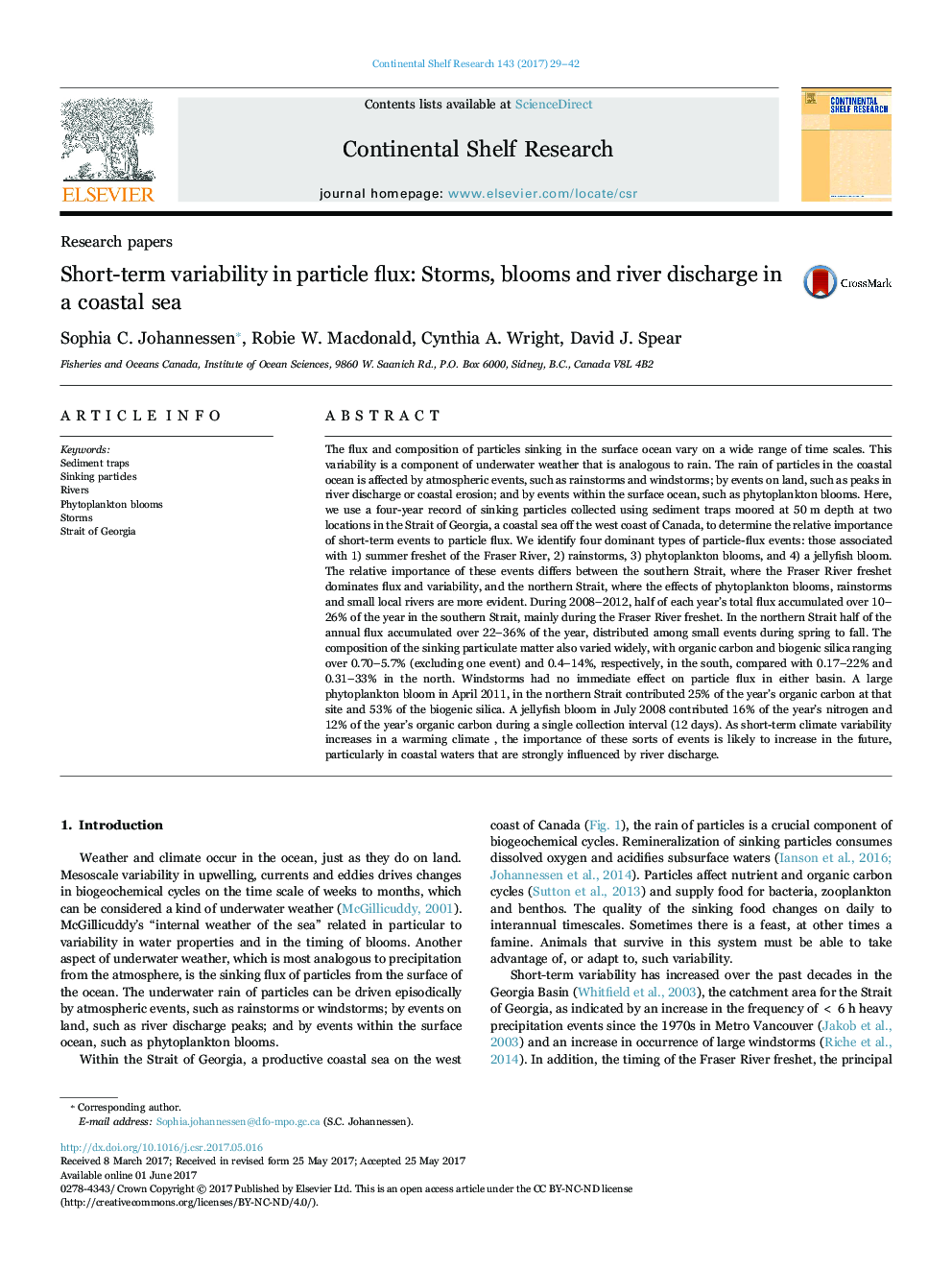| کد مقاله | کد نشریه | سال انتشار | مقاله انگلیسی | نسخه تمام متن |
|---|---|---|---|---|
| 5764384 | 1626070 | 2017 | 14 صفحه PDF | دانلود رایگان |
عنوان انگلیسی مقاله ISI
Short-term variability in particle flux: Storms, blooms and river discharge in a coastal sea
ترجمه فارسی عنوان
تنوع کوتاه مدت در شار ذرات: طوفان، شکوفه و تخلیه رودخانه در یک دریا ساحلی
دانلود مقاله + سفارش ترجمه
دانلود مقاله ISI انگلیسی
رایگان برای ایرانیان
کلمات کلیدی
تله رسوب، ذرات غرق شدن، رودخانه ها، شکوفه فیتوپلانکتون، طوفان تنگه گرجستان،
موضوعات مرتبط
مهندسی و علوم پایه
علوم زمین و سیارات
زمین شناسی
چکیده انگلیسی
The flux and composition of particles sinking in the surface ocean vary on a wide range of time scales. This variability is a component of underwater weather that is analogous to rain. The rain of particles in the coastal ocean is affected by atmospheric events, such as rainstorms and windstorms; by events on land, such as peaks in river discharge or coastal erosion; and by events within the surface ocean, such as phytoplankton blooms. Here, we use a four-year record of sinking particles collected using sediment traps moored at 50Â m depth at two locations in the Strait of Georgia, a coastal sea off the west coast of Canada, to determine the relative importance of short-term events to particle flux. We identify four dominant types of particle-flux events: those associated with 1) summer freshet of the Fraser River, 2) rainstorms, 3) phytoplankton blooms, and 4) a jellyfish bloom. The relative importance of these events differs between the southern Strait, where the Fraser River freshet dominates flux and variability, and the northern Strait, where the effects of phytoplankton blooms, rainstorms and small local rivers are more evident. During 2008-2012, half of each year's total flux accumulated over 10-26% of the year in the southern Strait, mainly during the Fraser River freshet. In the northern Strait half of the annual flux accumulated over 22-36% of the year, distributed among small events during spring to fall. The composition of the sinking particulate matter also varied widely, with organic carbon and biogenic silica ranging over 0.70-5.7% (excluding one event) and 0.4-14%, respectively, in the south, compared with 0.17-22% and 0.31-33% in the north. Windstorms had no immediate effect on particle flux in either basin. A large phytoplankton bloom in April 2011, in the northern Strait contributed 25% of the year's organic carbon at that site and 53% of the biogenic silica. A jellyfish bloom in July 2008 contributed 16% of the year's nitrogen and 12% of the year's organic carbon during a single collection interval (12 days). As short-term climate variability increases in a warming climate , the importance of these sorts of events is likely to increase in the future, particularly in coastal waters that are strongly influenced by river discharge.
ناشر
Database: Elsevier - ScienceDirect (ساینس دایرکت)
Journal: Continental Shelf Research - Volume 143, 1 July 2017, Pages 29-42
Journal: Continental Shelf Research - Volume 143, 1 July 2017, Pages 29-42
نویسندگان
Sophia C. Johannessen, Robie W. Macdonald, Cynthia A. Wright, David J. Spear,
